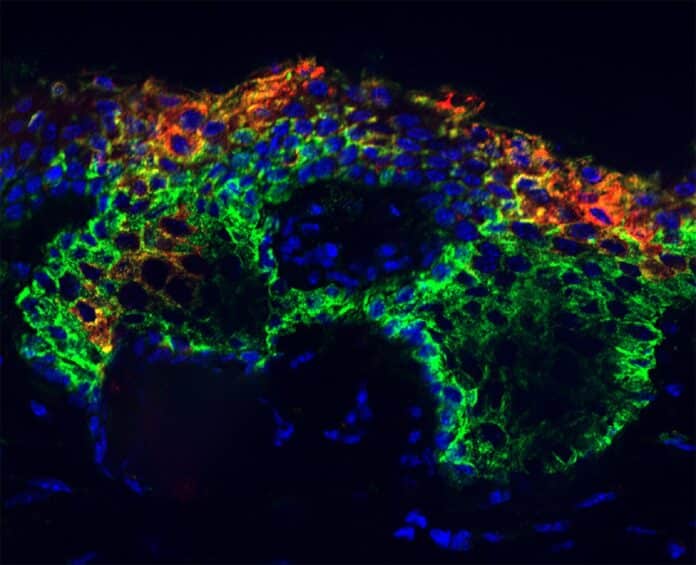A single layer of epidermal progenitor cells forms the embryonic epidermis, forcing stem cells to make a fateful decision. SOX9 is necessary for the fate switch to occur if the progenitor cell expresses SOX9; hair follicle cells develop, while epidermal cells do not.
The SOX9 gene has been implicated in many of the world’s deadliest cancers, including lung, skin, head, neck, and bone. Aberrant epidermal stem cells can later turn on SOX9, initiating a process that ultimately activates cancer genes in the skin. SOX9 is normally repressed in adult epidermal stem cells and is required to identify adult hair follicle stem cells. In basal and squamous cell carcinomas, SOX9 is reactivated in adult epidermal stem cells.
The researchers produced mice with a copy of SOX9 that could be triggered in their adult epidermal stem cells when they were fed doxycycline. This medication generated the transgenic SOX9. SOX9 is overly active in many of the deadliest cancers worldwide. The researchers aim to look for ways to intervene in its role in proliferating these cells.
Researchers at Rockefeller University have discovered the mechanisms responsible for this malignant development. A protein called SOX9 regulates the transfer of genetic information from DNA to mRNA. A gene activator can break open sealed pockets of genetic material, bind to previously silent genes, and make them active. The discovery provides new insights into how cancer derails a stem cell’s carefully tuned decision-making process, making it impossible to make normal tissue.
Elaine Fuchs, head of the Robin Chemers Neustein Laboratory of Mammalian Cell Biology and Development, said, “Our discovery provides new insights into how cancer derails a stem cell’s carefully tuned decision-making process, after that making it impossible for it to make normal tissue, It also illuminates new SOX9-activated genes as potential therapeutic targets.”
A few “pioneer factors” aren’t transcription factors in the genome. These factors can unlock genetic packets, peer inside the closed chromatin, recognize binding sites within, and recruit other transcription factors to help them pry open the closed chromatin and bind to receptor sites on the nucleosome, reprograming the chromatin and activating new genes.
He said, “In adult tissues, choices easily made in embryogenesis are tightly suppressed so that adult stem cells stick to their dedicated task.”
They tracked the epigenetic process going on behind the scenes at the same time. SOX9 shut off the epidermal stem cell genes for the first two weeks. They began to activate hair follicle stem cell genes, reversing their usual condition.
SOX9 snatched the nuclear machinery from the active epidermal genes to achieve this fate switch. According to the researchers, it moved it to the silent hair follicle genes, who then sought the method. Other transcription factors were then used to force open the locked chromatin and attach to the quiet genes inside, activating them.
He said, “When SOX9 could not be regulated, the stem cells failed to make hair but instead just kept proliferating and activating several new transcription factors, eventually leading to a basal cell carcinoma state.”
The fact that SOX9 is a pioneer factor, according to Yang, is the only reason this convoluted, identity-shifting back-and-forth was feasible. He emphasizes that “only a pioneer factor can access closed chromatin.”
The researcher said, “By identifying how SOX9’s interacting proteins and target genes change during malignancy, we hope to make inroads into unearthing new drug targets for these cancers.”
Journal Reference:
- Yang, Y., Gomez, N., Infarinato, N. et al. The pioneer factor SOX9 competes for epigenetic factors to switch stem cell fates. Nature Cell Biology. DOI: 10.1038/s41556-023-01184-y
